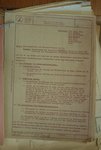The C-Stoff tank was behind the cockpit, but the T-Stoff tanks were either side of the pilot's seat. You can refer to my thread for photographic evidence here:
http://www.ww2aircraft.net/forum/wa...c-aircraft-walkarounds-nuuumannn-36981-2.html
http://www.ww2aircraft.net/forum/wa...c-aircraft-walkarounds-nuuumannn-36981-2.html

